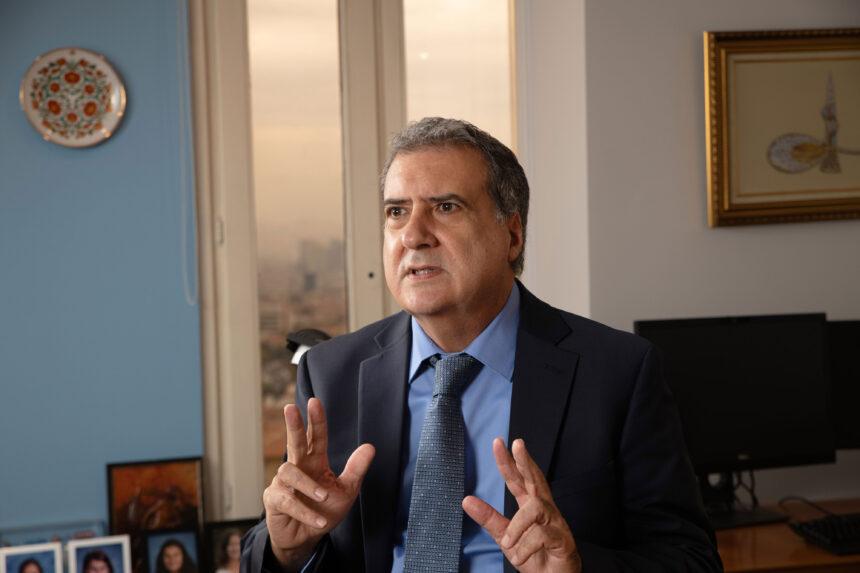by Humberto López, World Bank Country Director of Türkiye
A few weeks back I was invited to participate in an event organized by SKD to discuss about financing for sustainable development; then, during COP28 I Dubai I joined a panel reflecting about the role of the financial sector on the transition to a net-zero world. And when preparing my talking points for these events I noticed that there are no assessments showing (i) what would be the price tag of building resilience to natural disasters (both climate change related and others such as earthquakes) in Türkiye; and (ii) whether the resources should come from the private or public sector. Let me say that this is an important issue that goes beyond the academic or purely analytical interest and clearly touches the policy arena.
So, what are we talking about?
When we think about building resilience in Türkiye the first thing that may come to our minds is the recovery and reconstruction of the areas affected by the February 6, 2023, earthquakes. I have been in the affected areas several times and as I have already mentioned, never in the more than 27 years I have been in the World Bank I have seen the level of devastation that I have seen in the Southern part of Türkiye. In the immediate aftermath of the earthquakes, my Bank colleagues estimated in the “Grade Report” that the direct damages of the earthquakes were $34 billion, but a report prepared by the country’s Strategy and Budget Office estimated that recovery and reconstruction need (a more relevant variable from a financial perspective) would be around $82 billion. Breaking the damage into categories, the World Bank assessment found that slightly above 50 percent of the damage corresponded to residential buildings; close to 30 percent of the dame to (both public and private) nonresidential buildings; and the remainder to public infrastructure. To put this in context, $82 billion is about 4 times the spending of Türkiye in education in one year.
Clearly, when one sees that a single event (treating the duplet earthquakes as a single event) has associated costs of $80 billion it is natural to question what it would take to build resilience in the existing stock of buildings to avoid the repetition of the February 6 damage. Yet most housing stock in Turkish cities built before 2000 when moder seismic codes were introduced is highly vulnerable to seismic risks, with about 6.7 million residential buildings requiring the retrofitting of their structure to become resilient. Once again, my colleagues at the World Bank estimated in 2021 that the cost of doing so would be about $465 billion. To put once again this figure in context, the Turkish GDP (i.e., the value of all goods and services produced in the country) in 2022 was $906 billion.
Turning now to climate change resilience, this is a topic that unfortunately is becoming increasingly urgent. For example, the 2021 floods affecting the Turkish Black Sea region killed almost 100 people and damaged or destroyed public and private infrastructure. Likewise, the forest fires that in 2021 took place in the Mediterranean Region are considered the worst ever in the country as they burnt around 1700 square kilometers of forest. And the outbreak of sea mucilage in the Sea of Marmara, which has choked sea life, has damaged the fishing industry, and threatened to impede the only shipping access to the Black Sea. These are events that not only have an impact on the affected communities but more generally on the whole economy and hence that require a national response.
As a country facing significant vulnerability to climate change, Türkiye has made ambitious international commitments -including a target of net zero emissions by 2053. According to the World Bank’s Country Climate Development Report, the cost of going in that direction over the 2022-2040 period would be (in
net present value terms) $647 billion. This would include investments in the power, residential, transport, forest, agriculture, and industry sectors, and would include mitigation, and resilience efforts. The analysis in the Country Climate Development Report also concluded that about half of the required investment would accrue to the public sector and the other half to the private sector.
Adding the three components described about the price tag of building resilience in Türkiye comes to about $1.2 trillion, or 130 percent of the country’s GDP in 2022. This is the total cost of recovery and reconstruction of the earthquake (82bn), the cost of building resilience to earthquakes (465bn) and the cost associated to Climate Change needs (647bn). I know that these estimates are subject to error. Yet, the comprehensiveness of the analysis underlying the estimates gives us enough comfort to conclude that (i) building resilience in Türkiye will require a very significant number of financial resources spanning many years; and (ii) this is not a task for the public sector alone but rather will require the collaboration, coordination, and partnership of the public and private sectors.
In the World Bank we are working with the public and private sectors to make progress in these areas providing resources to build resilience and creating mechanisms to ensure an adequate coordination between the public and private sides of the economy. For example, the $1 billion Earthquake Recovery and Reconstruction approved in the aftermath of the earthquake is supporting efforts to rebuild municipal infrastructure and rural housing in a resilient way. And our $512 million Climate and Resilient Cities and $450 million Earthquake, Floods and Wildfires Emergency reconstruction projects support efforts to make existing both municipal infrastructure and housing resilient to natural disasters including earthquakes. Finally, we also have several operations that support the energy transition in the country by providing access to finance to the private sector. These include the $450 million Green Industry (supporting the greening of SMEs) and $405 million Green Finance (creating an equity fund to expand climate financing) as well as operations under preparation to support the private sector adjustment to the European Union CBAM, and direct financing for the installation of rooftop solar panels.
A big task that will require that we all work together.










